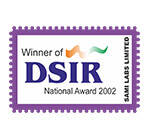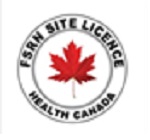
Sabinsa Corporation Granted Patent for Tetrahydrocurcuminoids

US Patent # 6,653,327 titled "Cross-regulin composition of turmeric-derived tetrahydrocurcuminoids for skin lightening and protection against UVB rays" was granted to Sabinsa Corporation on November 25, 2003.
The patent describes a mixture of tetrahydrocurcuminoids, which can be used for regulating random, intracellular protein cross-linking and to optimize skin cell electric potential. Tetrahydrocurcuminoids consist of tetrahydrocurcumin (the main constituent), terahydrodemethoxycurcumin and tetrahydrobisdemethoxycurcumin. The Bioprotectant ® and Crossregulin ® composition of tetrahydrocurcuminoids was found to be particularly effective in tyrosinase inhibition, and in affording protection to the skin against UVB radiation and chemical, physical and biological irritants. These benefits are attributed to the superior properties of the composition described by inventors as Crossregulin ® in regulating the post-translational modification and cross-linking of intracellular proteins to deliver the desired nutraceutical and cosmeceutical benefits.
Tetrahydrocurcuminoids (THC) are color-free compounds derived from curcuminoids, the yellow natural phenolic antioxidant compounds extracted from turmeric roots (Curcuma longa, family: Zingiberaceae). Curcuminoids prevent free radical formation and scavenge free radicals in biological systems, which amounts to the "Bioprotectant" mechanism that protects the integrity of living cells. The antioxidant effects of curcuminoids combined with their known inhibitory effects on cyclooxygenase 2 (COX-2) render them useful as ingredients in anti-aging formulations and in topical formulations designed to maintain general skin health and integrity. THC have also been found to inhibit the activity of tyrosinase, an enzyme that participates in melanogenesis, thereby preventing melanin formation with resultant lightening of the skin tone. These biological properties of the THC combined with their lack of yellow color, render them useful in achromatic food and cosmetic applications.











